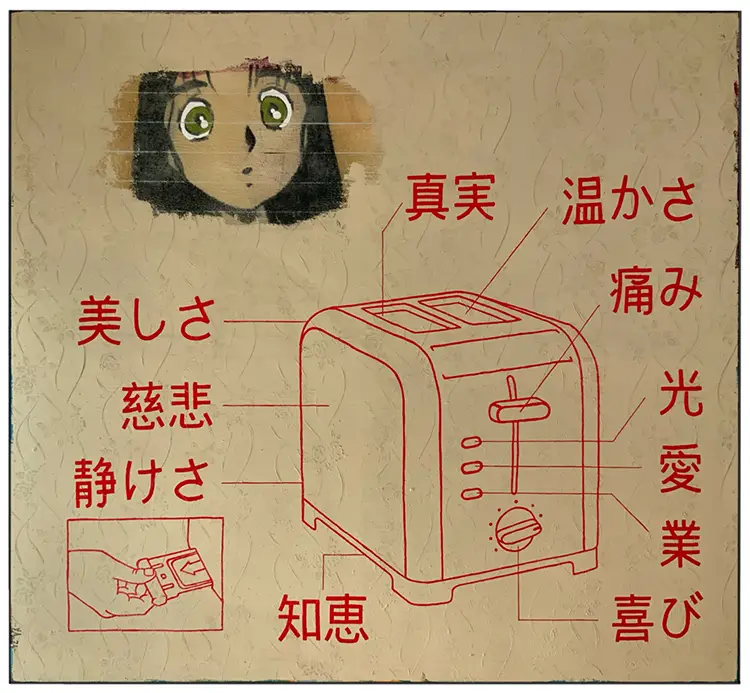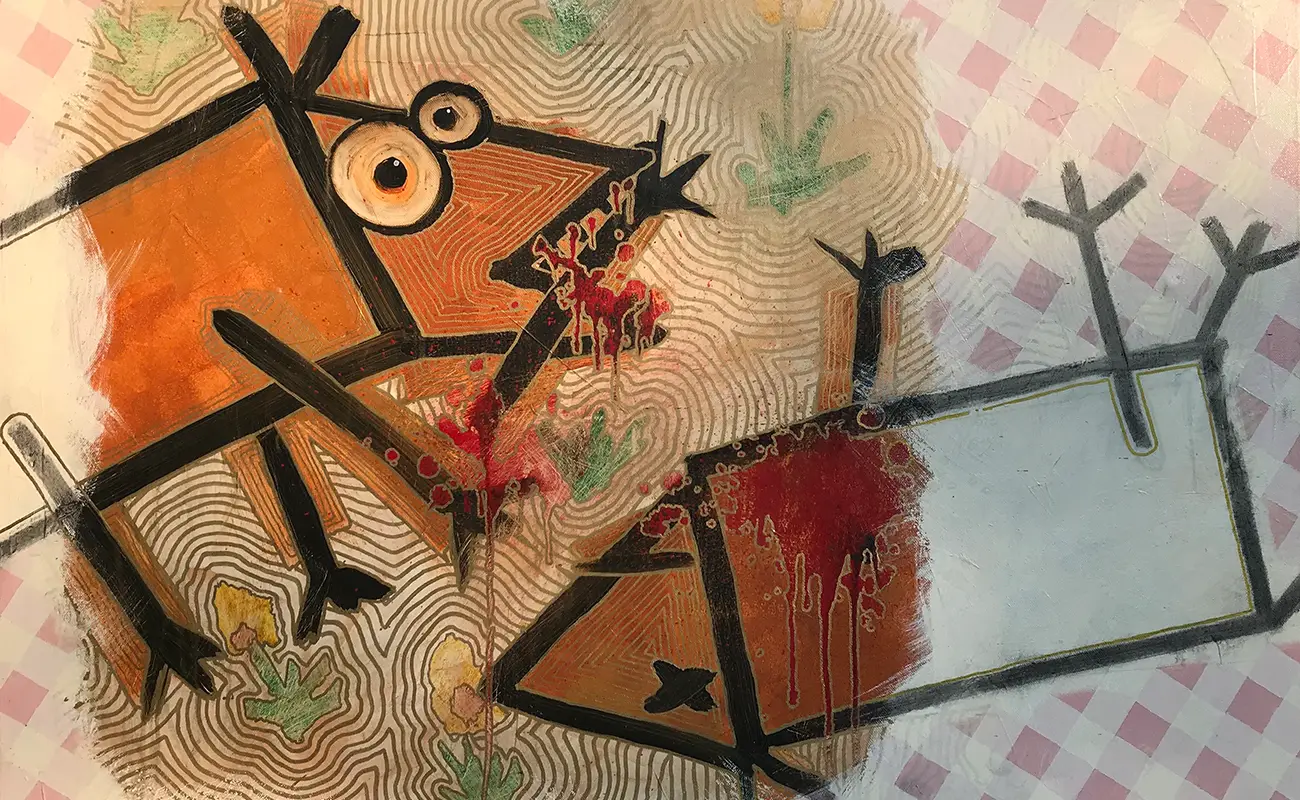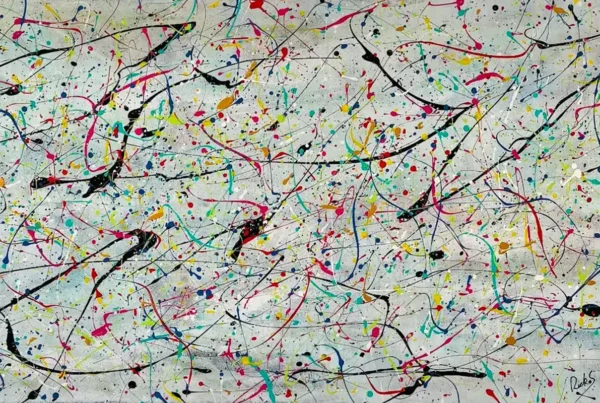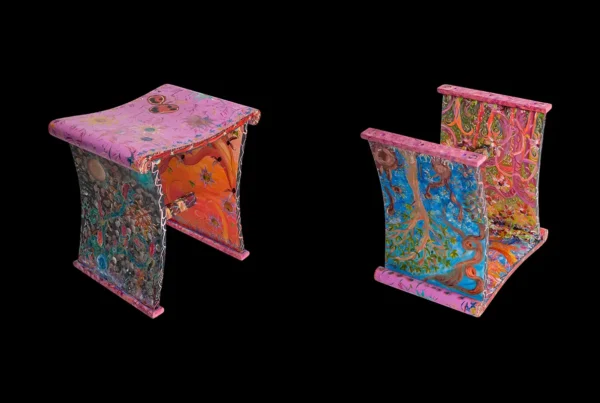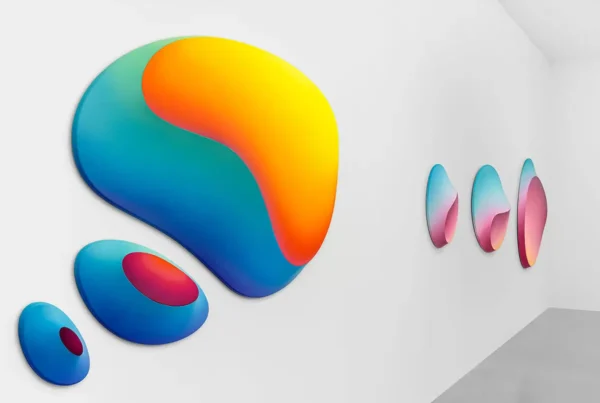“I want to create art that sneaks past your mind and reaches your heart as unfiltered as possible.”
Surfing the Currents of Color and Imagination
Northern Germany, known for its open landscapes and windswept coasts, was where Ettore Albert first encountered the endless possibilities of light, shape, and color. Born in Halle an der Saale in 1979 and raised further north, he found early solace and inspiration in creativity, an essential part of who he is today. His artistic journey has always been less about mastering a form and more about cultivating an environment where his vivid inner world could manifest. From childhood experiments with decorating surfaces to adolescent graffiti escapades, Ettore’s playful spirit and deep connection to the sensuous world have continuously fueled his creative fire.
Creativity, for Ettore, is a profound expression of freedom. Rejecting the constraints of conventional communication, he explored how visual elements could encapsulate emotions words often failed to capture. His work resists confinement within traditional categories, instead flourishing within the endless interplay of color, form, texture, and contrast. This hunger for exploration is rooted in his personality: a restless seeker who prizes novelty and depth over predictability. Art, therefore, is not just a vocation for him, but a necessary refuge where the demands of rigid systems and banal expectations melt away.
Ettore’s physical workspace mirrors his emotional needs: it demands calm, light, and a sense of security, though he embraces occasional distractions with a surprising fluidity. In this sanctuary, he navigates the fine line between concentration and surrender, allowing unexpected influences to either subtly shift his process or gently fall aside. His openness to spontaneity is not a lapse in discipline but a conscious part of his artistic philosophy—one that favors authentic, organic growth over rigid control.
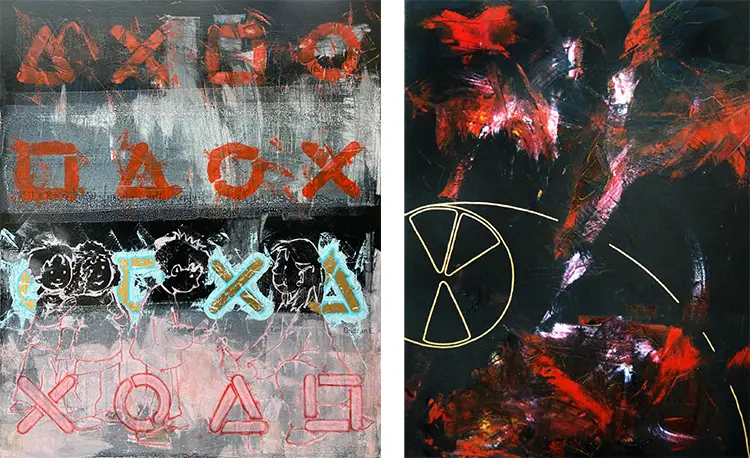
Ettore Albert: A Post-Pop Visionary Shaping New Narratives
Describing his artistic style is no easy task, even for Ettore himself. While critics cautiously label his approach as “Post-Pop,” Ettore sees these categories as temporary placeholders, barely scratching the surface of his evolving identity. He acknowledges the resonance of Pop Art’s bright, ironic, and accessible language in his work, yet his journey pushes far beyond homage or replication. His art often traverses into realms of irony, playfulness, and emotional rawness, creating a dynamic fusion that is entirely his own.
The vibrancy of artists like Warhol, Lichtenstein, and Rauschenberg undoubtedly leave traces across Ettore’s paintings. Yet it is the way he disrupts and reinterprets cultural clichés that truly distinguishes his work. Pieces like Cat, Son and Mother offer glimpses into his layered storytelling, blending humor and sacred iconography to challenge the viewer’s assumptions. Reality and fiction dissolve into one another, producing images that are both deeply familiar and strikingly alien. His paintings exist in a state of continuous transformation, reflecting a world where boundaries blur and categories lose meaning.
Inspiration for Ettore comes from an infinite wellspring of experiences and observations. Whether drawn from the green of cacti under the terrace sun or a snatch of melody caught on the radio, these stimuli brew in his consciousness until they emerge, transfigured, on canvas. He likens this process to tending a pot into which everything inspiring is tossed—an endless stew of memory, feeling, and possibility. This lively internal dialogue between imagination and the outer world ensures that his work remains alive, unpredictable, and ever-evolving.
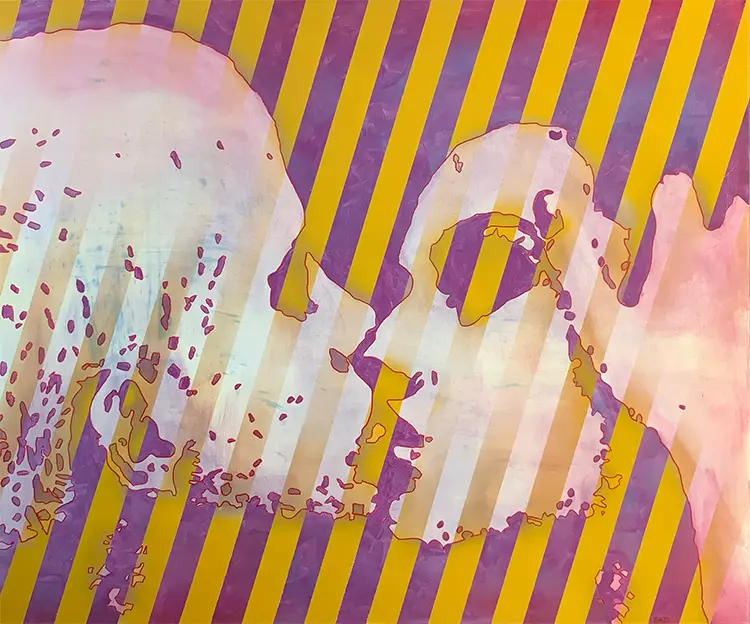
Boundless Mediums and Ever-Shifting Frontiers
Ettore Albert’s journey through mediums reflects his philosophy of embracing the unknown. Although oil and acrylic on canvas have become his signature techniques, his artistic curiosity extends far beyond traditional materials. The magnetic draw of oil paints—due to their depth, vibrancy, and capacity for slow, deliberate work—originally pulled him from the fast-paced immediacy of graffiti into the more contemplative space of studio practice. Yet he never fully abandoned the dynamism and momentum cultivated on the streets.
His projects often span multiple formats and timelines, evolving in tandem with his moods and discoveries. Among these, two ongoing endeavors particularly stand out. One is the slow, intricate development of a new tarot deck—a project embodying his fascination with symbolism, archetype, and mystery. Another is a remarkable experiment involving living organisms: on a house wall, he nurtures various lichens through customized nutrient solutions, creating a breathing, growing artwork. This living piece exemplifies his desire to stretch the definition of art itself, challenging both temporal and material boundaries.
Ettore’s willingness to let ideas germinate over years rather than rushing toward completion speaks to his broader belief that authentic creativity cannot be forced. Whether choosing a medium carefully for a specific project or spontaneously using materials within reach, he views every act of creation as an invitation to discovery. His relationship to his work is fluid and dialogic, rooted in responsiveness to both internal urges and the ever-changing external world.
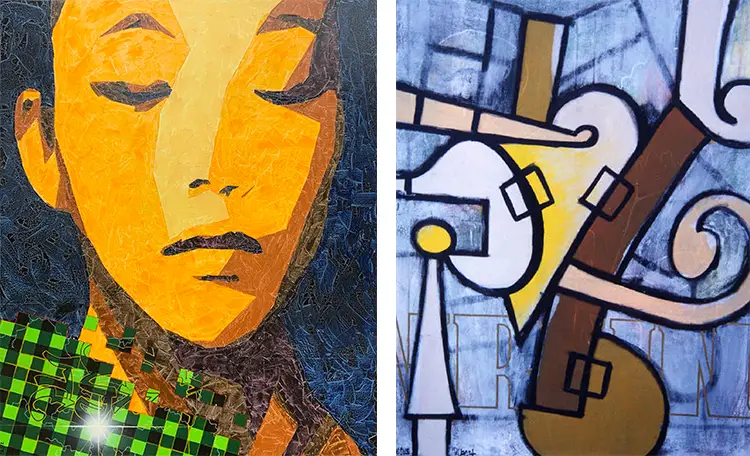
Ettore Albert: Art as an Invitation to Play and Wonder
For Ettore Albert, art is less about making grand declarations and more about opening doors—for himself and his viewers. His studio is a playground where he experiments with how minimal color and form can carry maximum emotional resonance. Faces, expressions, and glances—elements that viewers instinctively read and interpret—become arenas where subjectivity flourishes, and assumptions unravel. His work invites audiences to participate in a dance of perception, revealing more about their own emotional landscapes than about any singular narrative.
Reflecting on the broader art community and market, Ettore expresses deep respect for those tasked with navigating the increasingly complex terrain of exhibitions, fairs, and sales. He sees gallery owners, curators, and publicists as vital intermediaries, shielding artists from the harsher demands of deadlines and commerce. His focus remains resolutely on creation rather than promotion, valuing the freedom to pursue his vision without compromise. By maintaining this separation, he preserves the integrity of his process, allowing inspiration to flow unimpeded.
Today, Ettore balances numerous projects, each an exploration of how little is needed to convey profound stories and emotions. His recent reflections on bias—sparked by observations of how the mind filters reality—have deepened his resolve to create works that bypass intellectual defenses and speak directly to the heart. For him, the ultimate success is not acclaim or sales, but connection: a silent, electric bond between artist, artwork, and viewer. And above all, Ettore’s enduring gratitude toward the beauty and absurdity of the world infuses his creations with an infectious spirit of joy, curiosity, and wonder. His work will be on display this year in Berlin, Bologna, Basel, and Lucerne—an exciting opportunity for audiences across Europe to experience this spirit firsthand.
